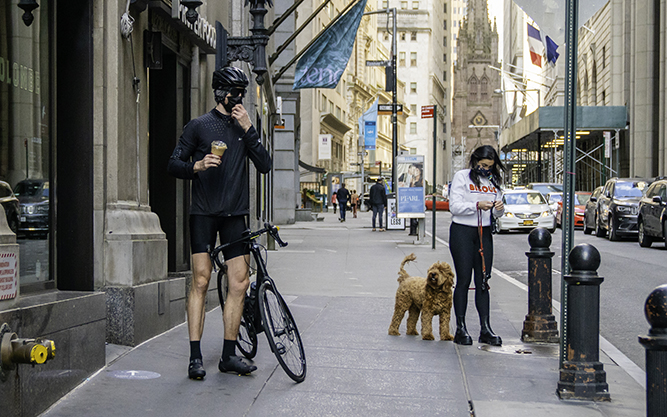

New bicycles are among the gear retailers report flying off shop shelves during the COVID-19 pandemic.
The COVID-19 pandemic, for all the turmoil it has caused, has also sparked a burst of interest in outdoor recreation for many people who had not taken to it before. Restrictions on activities such as eating at restaurants, working out at gyms, visiting museums, and shopping in malls have pushed many to step outdoors for a physical distancing-friendly hike, bike ride, or camping trip. Some, for the first time.
An ongoing study by the Outdoor Industry Association has shown a marked increase in participation of outdoor recreation since the shutdown. The monthly data is sampled from 1 million Americans and shows that in April, May, and June 2020, the greatest increases in participation were seen in cycling and hiking. Among urban residents, running, biking, day hiking, bird-watching, and camping rose significantly since March, according to the report. At outdoor shops and outfitters, that’s translated into a run on certain gear.
Bicycles appear to be the biggest winners of the COVID-19 shutdowns. The humble two-wheeled mode of transportation is one of the best for maintaining physical distance, easily allowing riders a six-foot berth, and moving swiftly enough to prevent prolonged exposure to others. Biking on both roads and trails offers a public transit-free option for commuters and is also an easy choice for those looking to get a start in outdoor recreation or stay in shape despite gyms across the country being closed. In April, as stay-at-home orders spread across the nation, sales of bicycles and bike accessories rocketed up 75 percent over the previous year to $1 billion, according to market research firm NPD Group.
“I met a lot of people who hadn’t been on a bike since their teens and figured hey, might as well buy a bike,” says Stephen Hand, outdoor programs director with Maine Sports Outfitters in Rockport, Maine.
Hand also says that boat sales and rentals are up in the past seven months. “Paddleboards, kayak rentals, and tours have all been way, way up. Boating’s been so popular, because we’re right on the water,” says Hand, adding that customers are renting boats for longer periods than in past years.
In May, Maine Sports Outfitters enjoyed its highest sales month in two decades, Hand says, adding that summer’s end slowed overall business some, “but not significantly.”
At Outdoor Gear Exchange in Burlington, Vt., sales for ski gear have been up, too, according to employee Austin Boart. With downhill skiing resorts suddenly closed in the early spring, Boart says many enthusiasts had to find alternative ways to hurtle down mountains. “Backcountry skiing has been big,” Boart says. “A lot of people were buying boots and skis, since nobody could go downhill skiing.”
For many, interest in outdoor recreation is more than a case of boredom or necessity. Finn Galloway-Kane of Craftsbury, Vt., says getting outside has helped him maintain a sense of social engagement with others. “It’s helped me feel more connected to the people around me who are also exercising because COVID has been so isolating.” With rates of depression and anxiety on the rise since the outset of the pandemic, it’s no surprise than many are using outdoor exercise as a way of balancing mental and physical health. “COVID has made me and many others more hyper-aware of health and the importance of personal health,” Galloway-Kane adds. “Exercise is less of a burden now and more of an opportunity.”
While the outbreak of COVID-19 has been devastating for small businesses, many outdoor retailers were unprepared for the stampede of business in the past six months. Owners are grateful, however, for the income in a time when many other industries are struggling.
“It’s funny,” Hand says. “Last year we had less business and more people working than we did this year we can barely keep things stocked before they’re sold out again.” The situation remains, despite a slow downtick in sales as fall settles in, a mixed burden and blessing.”